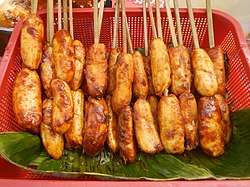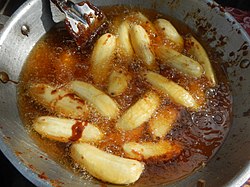  | |
| Alternative names | Sinulbot na saging, maruya, banana-cue, etc. |
|---|---|
| Region or state | Philippines |
| Main ingredients | saba banana, brown sugar, cooking oil |
Banana cue or bananacue is a popular snack food or street food in the Philippines. It is a portmanteau of banana and barbecue , which in Philippine English refers to meat cooked in a style similar to satay. [1]


